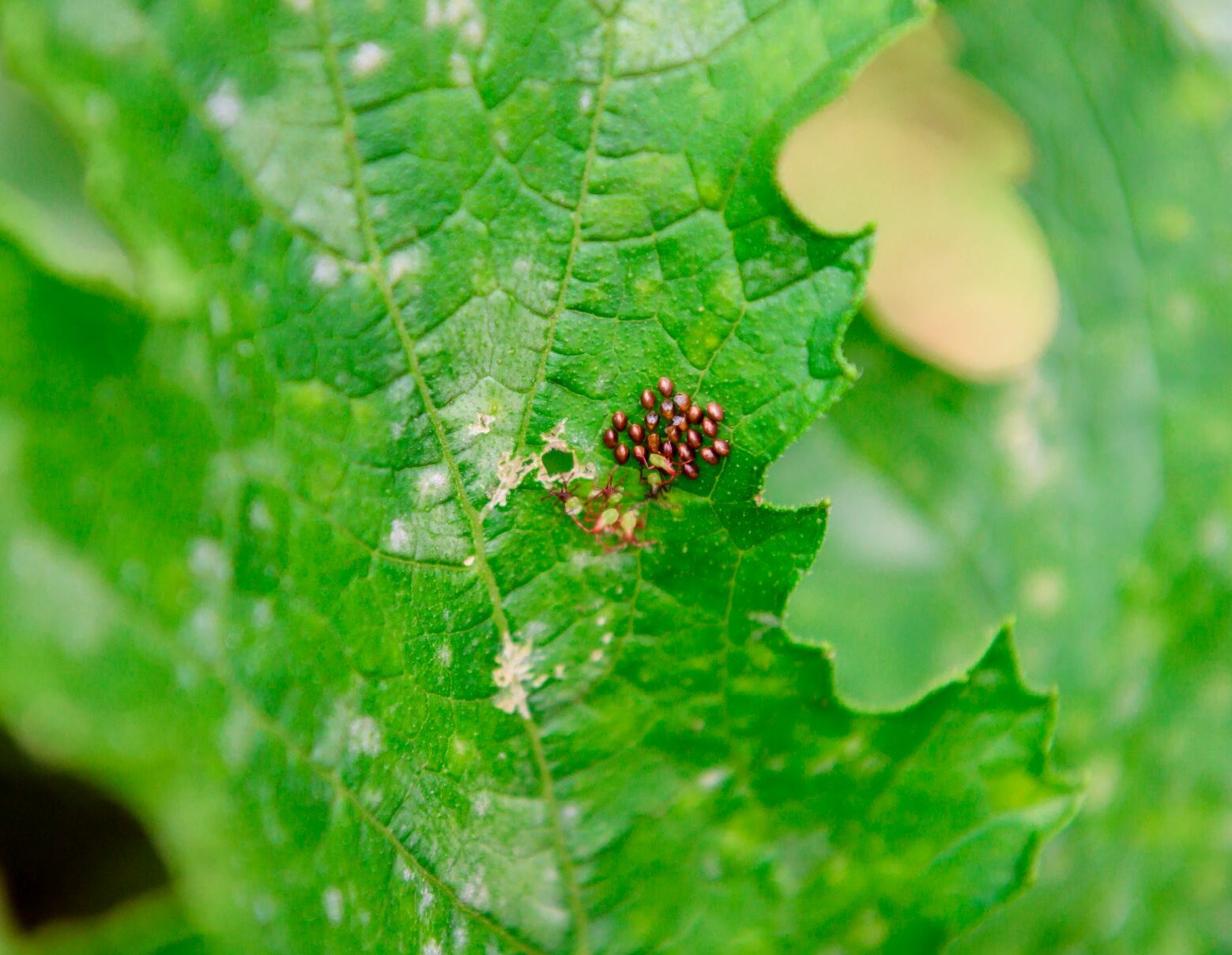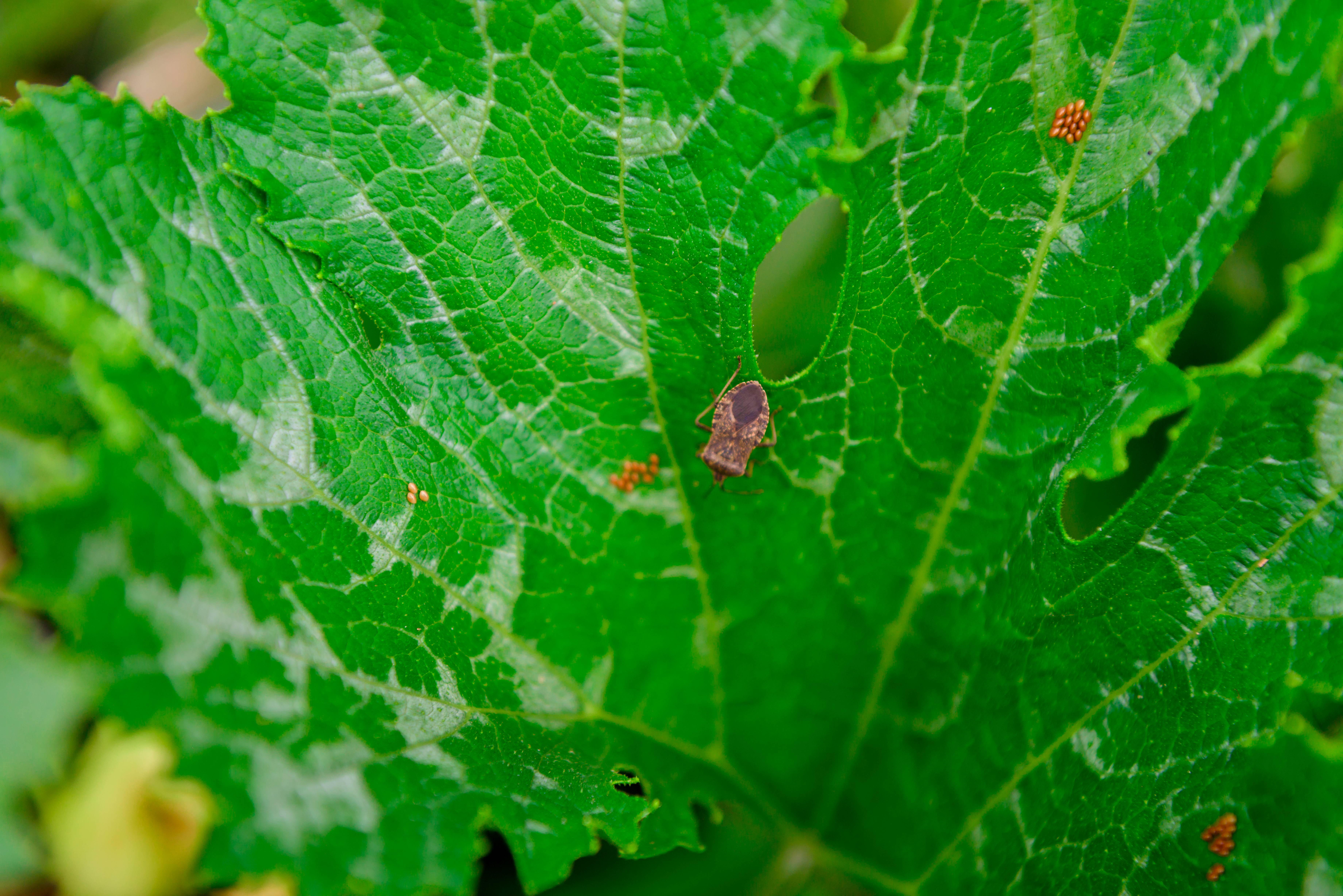Squash Bugs on Cucurbits
go.ncsu.edu/readext?944650
en Español / em Português
El inglés es el idioma de control de esta página. En la medida en que haya algún conflicto entre la traducción al inglés y la traducción, el inglés prevalece.
Al hacer clic en el enlace de traducción se activa un servicio de traducción gratuito para convertir la página al español. Al igual que con cualquier traducción por Internet, la conversión no es sensible al contexto y puede que no traduzca el texto en su significado original. NC State Extension no garantiza la exactitud del texto traducido. Por favor, tenga en cuenta que algunas aplicaciones y/o servicios pueden no funcionar como se espera cuando se traducen.
Português
Inglês é o idioma de controle desta página. Na medida que haja algum conflito entre o texto original em Inglês e a tradução, o Inglês prevalece.
Ao clicar no link de tradução, um serviço gratuito de tradução será ativado para converter a página para o Português. Como em qualquer tradução pela internet, a conversão não é sensivel ao contexto e pode não ocorrer a tradução para o significado orginal. O serviço de Extensão da Carolina do Norte (NC State Extension) não garante a exatidão do texto traduzido. Por favor, observe que algumas funções ou serviços podem não funcionar como esperado após a tradução.
English
English is the controlling language of this page. To the extent there is any conflict between the English text and the translation, English controls.
Clicking on the translation link activates a free translation service to convert the page to Spanish. As with any Internet translation, the conversion is not context-sensitive and may not translate the text to its original meaning. NC State Extension does not guarantee the accuracy of the translated text. Please note that some applications and/or services may not function as expected when translated.
Collapse ▲Squash is a popular summer vegetable for many gardeners. However, one challenge when growing squash is a common pest called squash bug. This insect can be a serious pest problem on not only yellow squash but also related cucurbit vegetables such as zucchini and pumpkins.
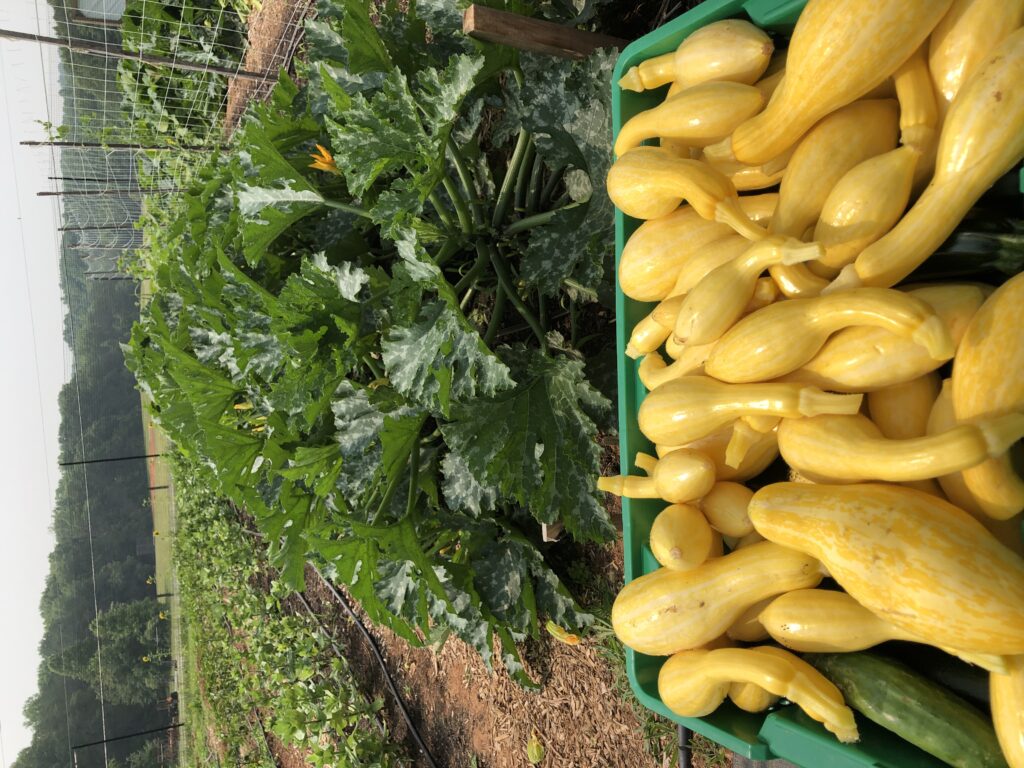
Yellow Squash freshly harvested from field. Photo: Celine Richard
The life cycle of the squash bugs begins with the unmated adult bugs overwintering in protected areas like under plant debris and then emerge in the spring. When they emerge, they seek out squash plants to feed on and other adults for mating. The females will lay clusters of about 20 bronze/copper colored eggs on the underside of leaves, commonly where two leaf veins meet to form a V, or on the stems, though, clusters can still be found elsewhere on the plant. The eggs begin to hatch in 1-2 weeks, typically from mid-May to mid-June. The newly hatched nymphs will have a black head and legs with light green bodies. As they grow, they turn light gray as they become adults. The adult bugs are brownish-black and about 5/8” long.
It takes about 5 weeks for the squash bug to complete its life cycle from egg to adult. In the piedmont, you can expect at least two generations of these insects in May and again in August, so keep a close eye on your plants scouting for both adults and their egg clusters.
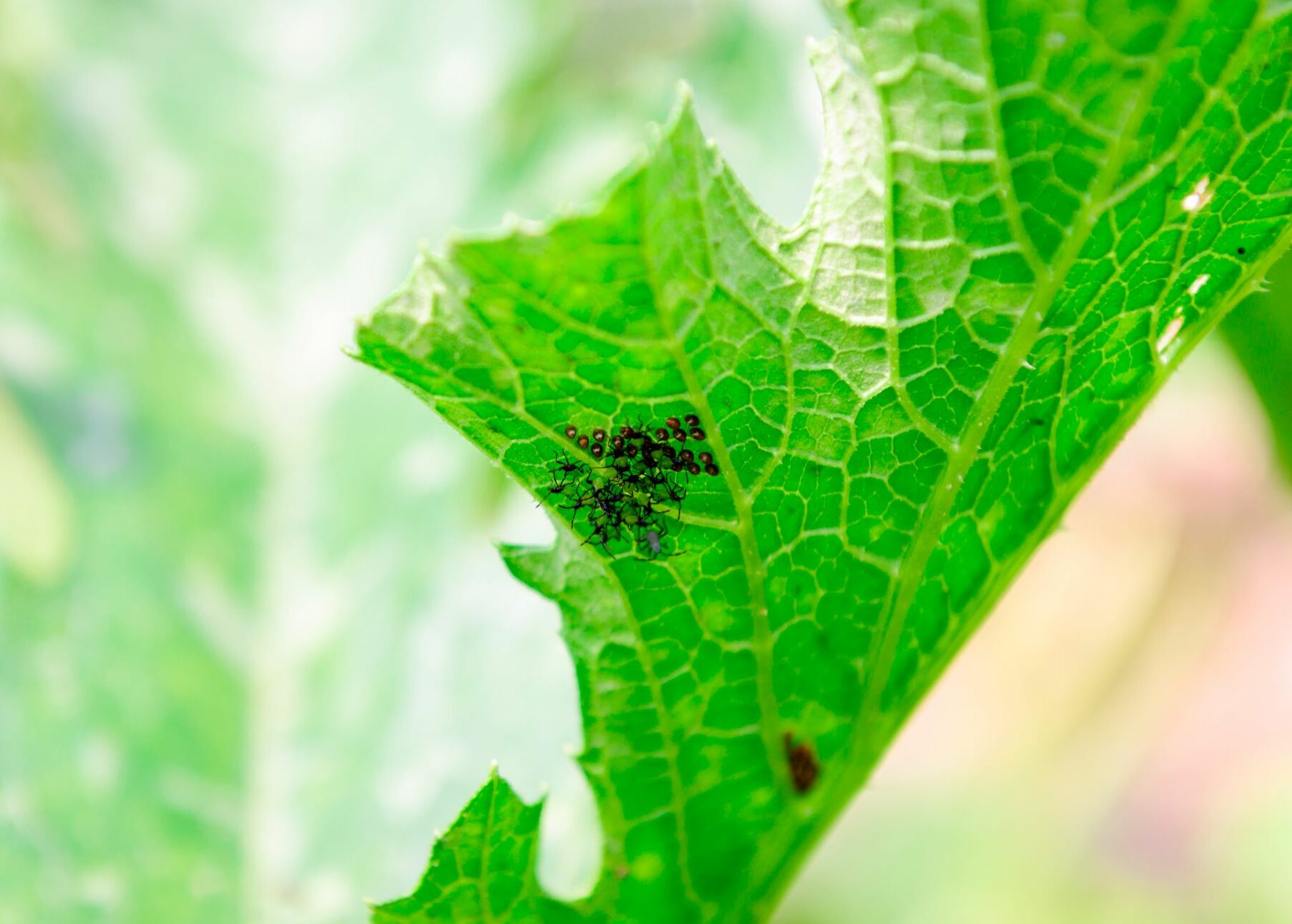
Squash bug adult often lays eggs in clusters on the underside of leaves. In the photo, young squash bug nymphs emerge from their eggs. Photo: Krista Smith
Squash bugs have straw-like or piercing-sucking mouthparts they stick in the plant and suck the sap out similar to how we would drink from a juice box. The symptoms that show up on squash plants will be yellow spots on the leaves where they have fed. The leaves will eventually turn brown and die. A squash bug’s damage will also disrupt flow of water and nutrients to leaves causing the leaves to wilt. Squash bug feeding can reduce yields and eventually can cause plant death.
There are several strategies listed below for controlling squash bugs:
- Since squash bugs overwinter on plant debris, it is important to do a good clean up in the fall by removing all plant debris.
- Squash bugs can also hide out in mulch, so removing mulch may also be necessary where populations are increasing.
- It is important to keep plants healthy and avoid stresses like lack of water, close spacing, etc. to help the squash plants to be more tolerable of insect damage.
- Early control is essential, not just because younger plants are more prone to damage but also because they are more difficult to kill the older they get.
- Frequent scouting and handpicking are effective, especially when you have only a few squash plants to care for. Squash bugs can simply be knocked off into a bucket of soapy water.
- Look for copper colored egg masses on underside of leaves and crush them.
- Do note that squash bugs are “shy”. They will run quickly for cover when disturbed so you will have to hunt for them on the underside of leaves and in center of the plant. Since they are “shy” you can set a trap for them. Place boards, pieces of newspaper, or cardboard out in the garden near plants. Squash bugs will congregate under them at night and then come morning, you can destroy/dispose of them.
- Plant earlier in the season, in early April, will allow you to harvest squash before squash bug populations’ increase. However, remember to prepare for frost protection if planting early.
- Insecticides can be used but will be most effective on young nymphs than the older adults.
- Note that when plants are blooming to avoid applying insecticide during bee activity. Bee activity is at a minimum early in the morning or in the evening. Active ingredients of some common insecticides that can be used for controlling squash bugs includes: Permethrin, Acetamiprid, Spinosad, Malathion.
Squash bugs are a common challenge when growing squash. Understanding the life cycle and possible control strategies can help keep them at bay until you get to harvesting some squash from the garden.
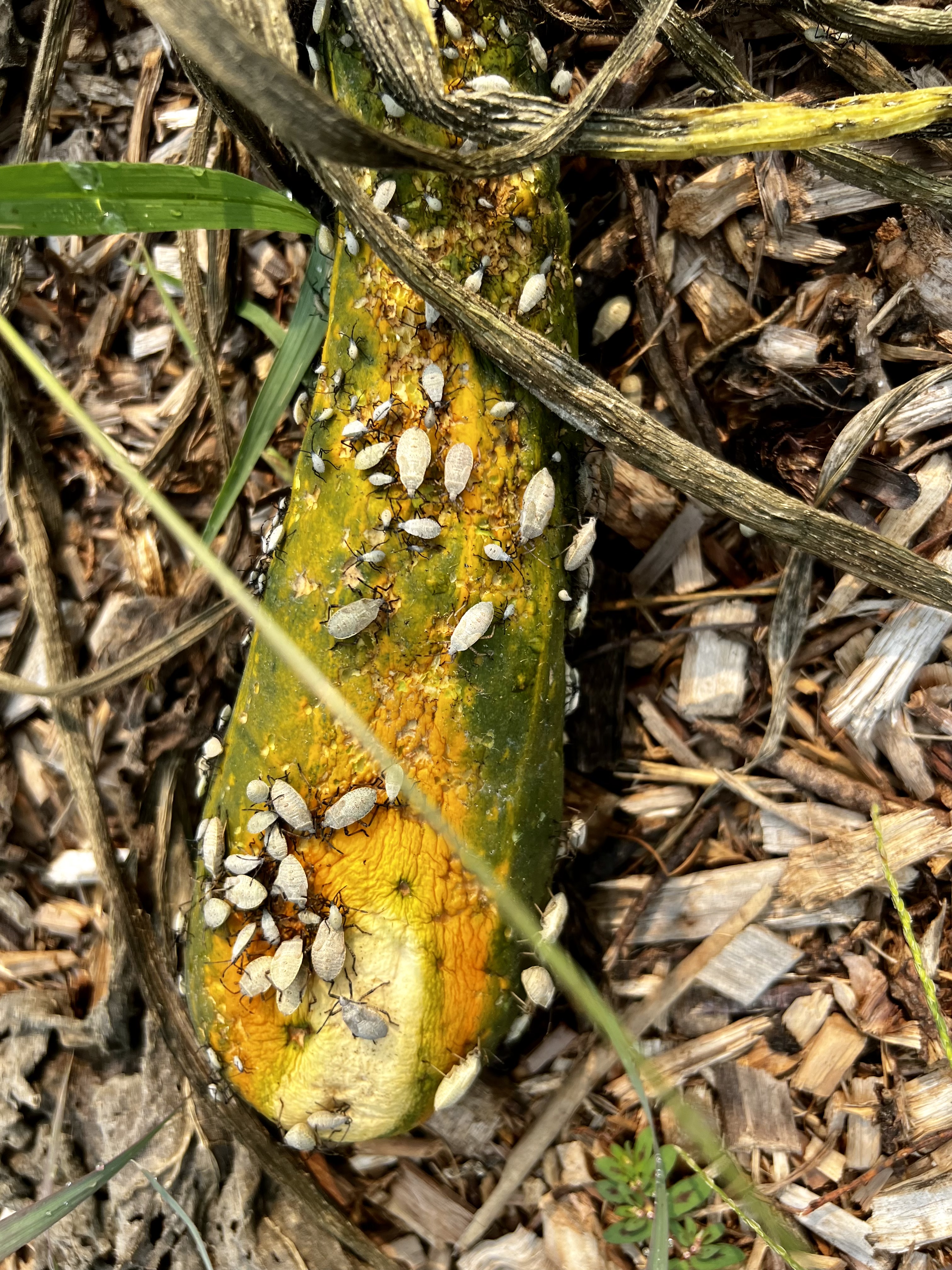
Early and late stage squash bug nymphs congregate together on infested zucchini fruit. Photo: Will Parham
Recommendations for the use of agricultural chemicals are included in this article as a convenience to the reader. The use of brand names and any mention or listing of commercial products or services in this article does not imply endorsement by North Carolina Cooperative Extension nor discrimination against similar products or services not mentioned. Individuals who use agricultural chemicals are responsible for ensuring that the intended use complies with current regulations and conforms to the product label. Be sure to obtain current information about usage regulations and examine a current product label before applying any chemical.
Adapted from and article originally written by Jessica Strickland, agriculture extension agent, N.C. Cooperative Extension, Wayne County Center.





